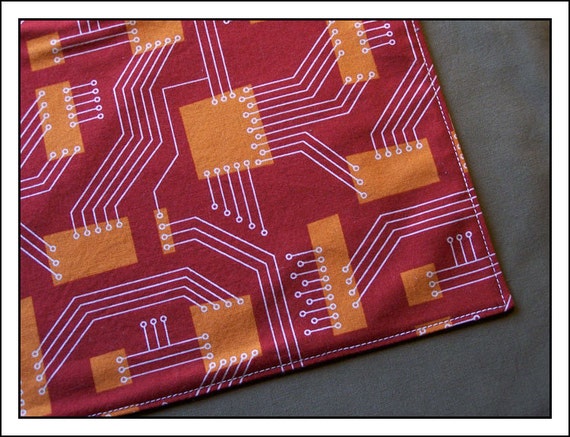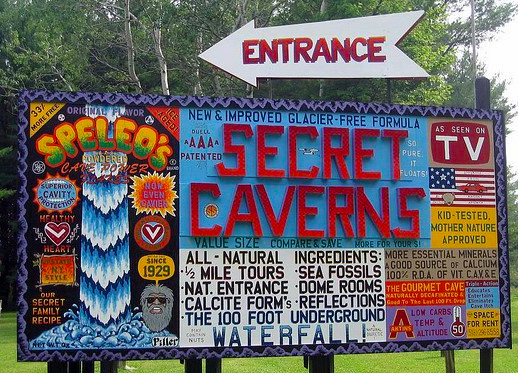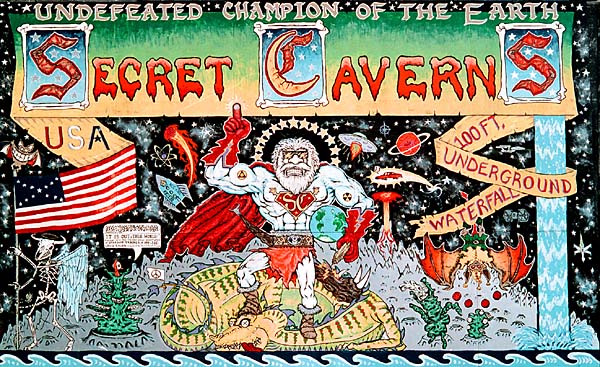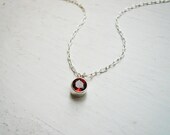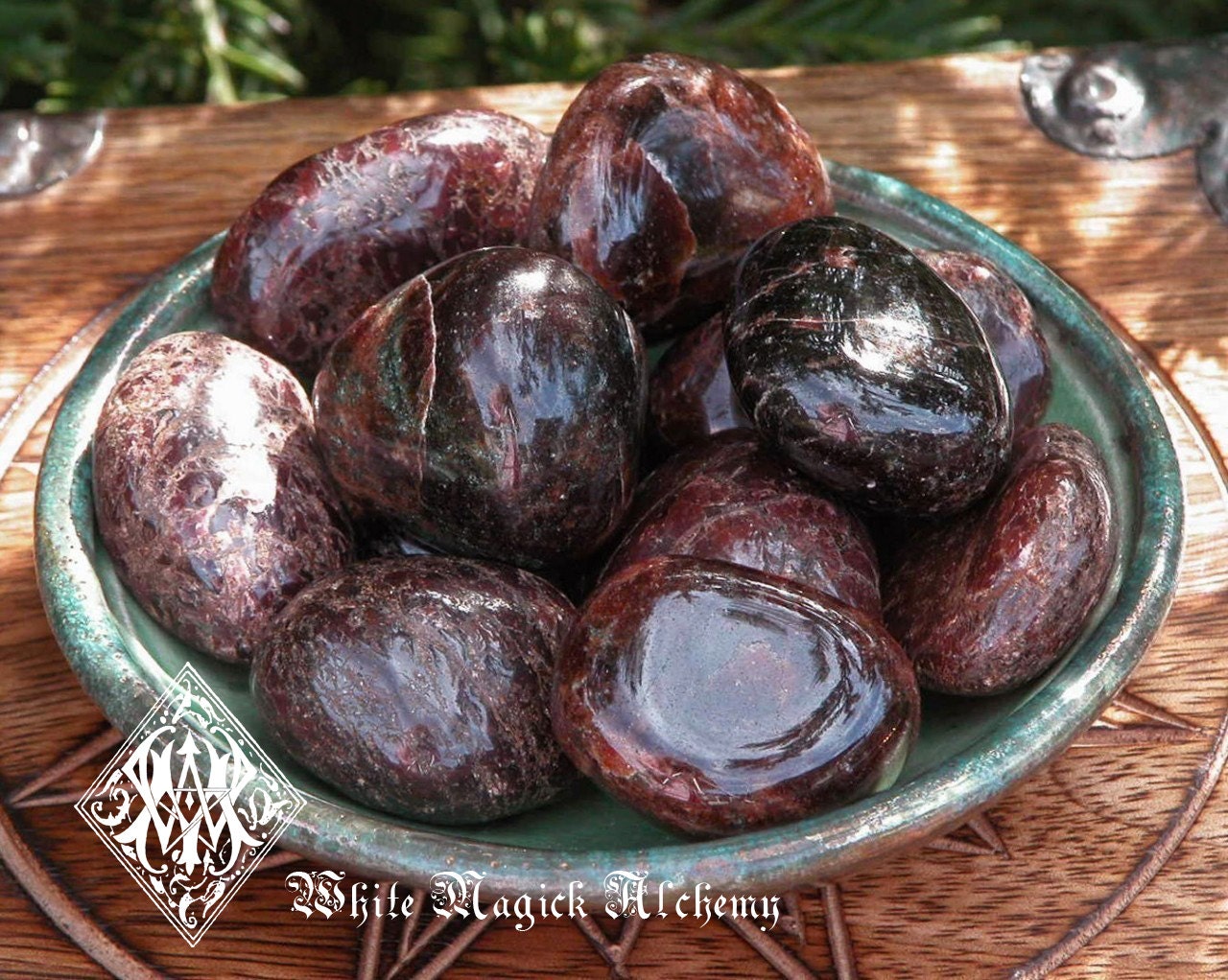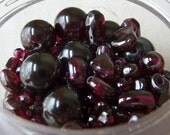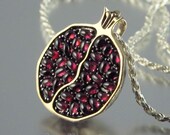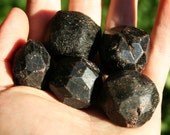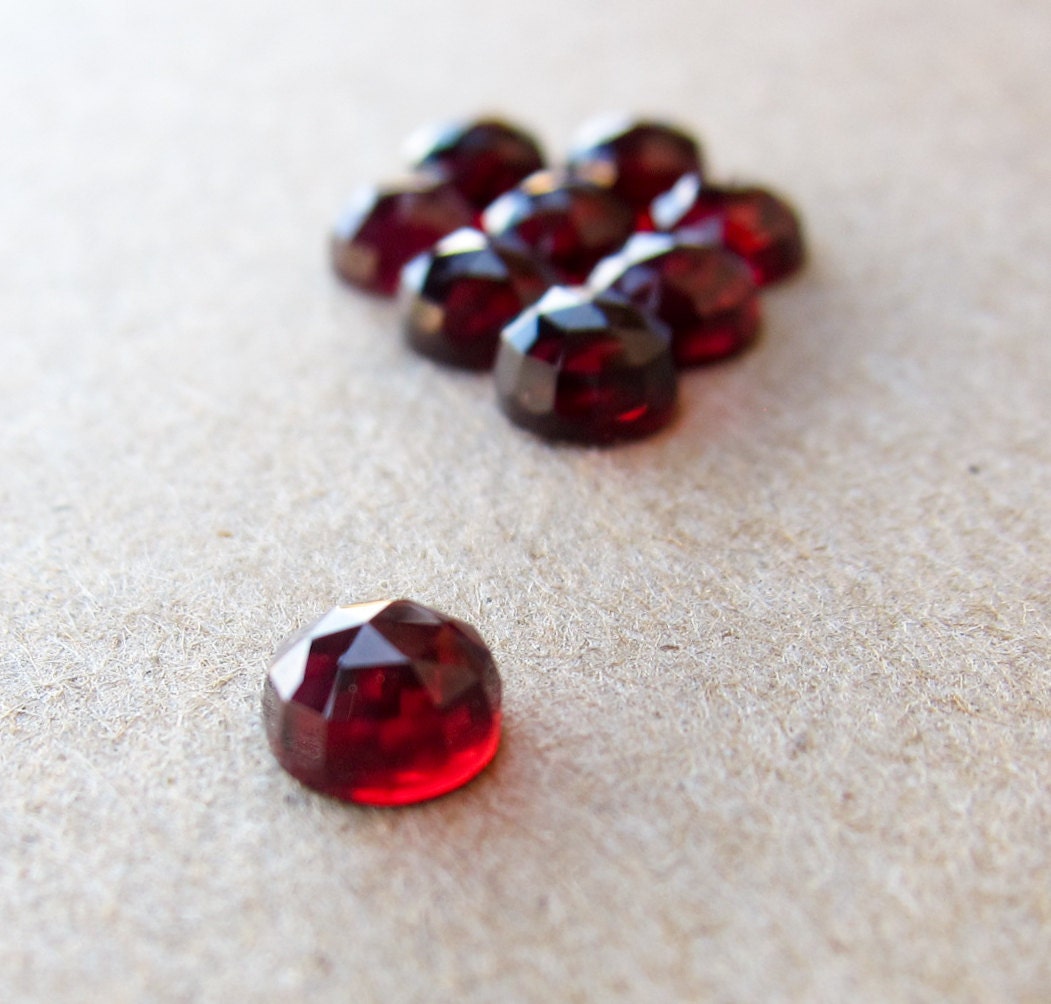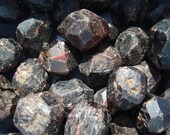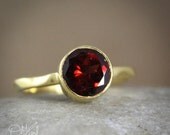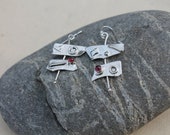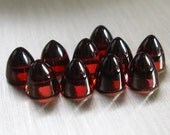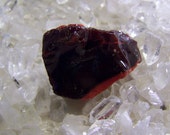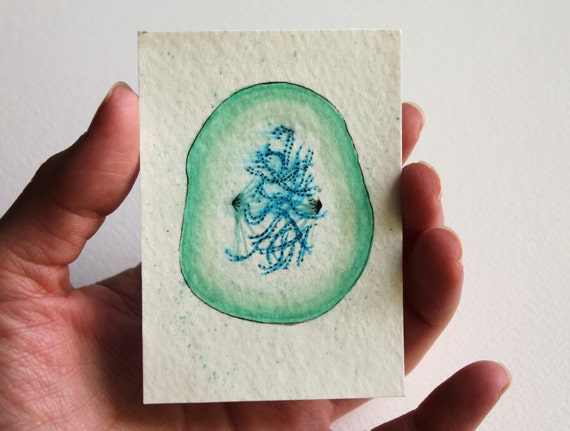JV and I spent Christmas Day in transit from Stockholm to the family farm in Uppsala. We managed to accomplish all the baking we intended to accomplish on Christmas Eve, so we had two tins of cookies and two tins of cupcakes to take with us. This in addition to JV's companion cube, gifts for the white elephant exchange, and overnght clothes meant we were a bit overburdened. Irritating, but not the end of the world.
The gathering included us, JV's mom (Ginja) and stepfather (Rolf), and his sister's (Petra's) family (husband Micke and two kids). The youngest son, Noel, is too young to have any kind of personality yet, but older brother Tim has full command of language and his facilities and is thus, basically, a little person. More specifically, he is a very forward and, in the kindest sense of the term, presumptuous little person. He could not give a shit what you are doing; if he thinks it looks fun or interesting he will walk right up to you and demand to be let in. If he wants you to play with him, he will tell you in no uncertain terms that it's time to play now. If he doesn't like something, you'll know. (At Thanksgiving, he turned down apple crisp because he "[didn't] want tomatos," which instead of being offended I thought was hilarious.) It's cute now, but I do hope he'll grow out of it as he ages, or at least learn to temper it with concern for other people. Which, to be fair, it's not like he's a little psychopath. He demonstrated spontaneous and appropriate concern for little brother Noel after the latter had sucked down too much ice cream too quickly and went from cooing and gurgling to crying from ice cream headache.
So when Rolf got a pretty powerful, compact little LED flashlight in the exchange, Tim immediately thought it was the best thing in the world and decided that it was going to be his jam for the rest of the day. He commandeered me and JV in a made-up game of walking around in the dark, in which each person took turns walking across the room to the other two people on the couch. Eventually it evolved into Tim deciding who should be walked toward, and also who should be scared and who should do the scaring.
Petra's family, having a car, left after a few hours, while JV and I stayed over the night (and then another). It's a long way to Tipirary, but it's also a long way to Alunda. As soon as they were out the door, the Boy said, "You know, I'm glad we're not having any kids. I don't have the energy for this." Neither do I, but the nice thing about being around such little kids is that they use the simplest possible Swedish so that even I can understand most of what's going on, and they also don't (yet) have much grasp of English, so Swedish is my only option.
It was a good Christmas, overall. We brought home a delicious garlic lamb sausage and chocolates from the gift exchange; Petra got the hilarious Svenglish decoration I bought and Ginja got the sushi kit he had picked out. She also sent us home with eggs (from their chickens) and garlic (from their garden), in addition to a pair of mittens and a book (in Swedish) for me. She dotes on JV and, by extension, me. How good to feel welcomed and loved in a new country.
The food, also, is always fantastic at the farm. Ginja is retired now and so has plenty of time to cook really amazing food; we never eat half so well at home as we do there. Plus, it's farm country so all of their friends and neighbors are farms and everyone buys from (or trades) with each other. At lunch, Ginja pulled out like a gallon tub of proper honey from a nearby apiary to go with the "Graham's grain porridge."
Unfortunately, the farm itself is rather far removed from the village of Alunda, which is nice enough but rather far removed from Uppsala, which is something like a proper city but still far removed from Stockholm; such remoteness makes it a pretty good place to retire to if you want to just futz around by yourself and live off the land and maybe do a little writing or arting or studying or whatever, but is rather untenable if you (like JV and I) are idiots who don't know how to farm and who lack a car for running errands (and the license to drive it). Thus we get the best of both worlds: carte blanche to visit whenever we like, for as long as we like, but without any of the responsibility of really taking care of the place (though we do help with basic things while we're there, if asked).
I always get a lot of reading done when we visit, and this time was no exception. I'm now about halfway through A History of Histories, and also started Crime and Punishment in Swedish. It sounds overambitious, I guess, but I already read it in English and it's one of my favorite books, so it's not really IMPOSSIBLE. At least, with a dictionary it's not impossible. Without a dictionary I'd be pretty boned. Either way, it's plenty of vocabulary for my notes. One page down, maybe four hundred more to go...!
Monday, December 30, 2013
Tuesday, December 24, 2013
Happy Christmas!
A happy (belated) solstice to you this season, whether it's the longest or shortest day of the year!
Friday, December 20, 2013
The Problem of Women in Philosophy: Are We Just Not Mean Enough?
I stumbled across this read from....somewhere. On Twitter, I do believe. How can we end the male domination of philosophy?
I appreciate your concern, Mr. Wolff, but I find your solution to this problem rather troubling. Condescending.
We don't need to make philosophy "nicer" to encourage more women; women don't shy away from the field because we don't enjoy rigorous debate. The gender ratio in my undergrad graduating class of philosophers was pretty evenly split, and it wasn't suddenly tea parties and diplomacy. Maybe it would be better for philosophy overall if it were "nicer," I don't know. Maybe it would be better if we started painting philosophy classrooms pink and giving them frilly lace curtains, while we're at it.
You cited a blog in your article, Being a Woman in Philosophy. Did you even read it before you linked to it? As if "everyday sexism," like "points made by women in meetings being ignored until repeated by a man; a room full of men falling silent when a woman walks through the door; clumsy sexual advances that when rebuffed generate a hostile atmosphere" are just piddling little issues to be brushed aside, and that the real problem is the nature of the discipline itself. That if we make philosophy nicer, women will be able to laugh off things like their dissertation's reception being dependent upon whether or not they agree to date one of the assessors or presenters using incredibly inappropriate rape analogies. There are few, if any, entries on that blog that complain of philosophy departments being "too mean." Yet there is a near endless stream of entries on male colleagues and higher-ups using their power to negotiate sexual attention or favors from women students/colleagues/candidates; rabid insensitivity to sexual harassment; and tolerance for crass attitudes and comments. The problem is not the field's focus on health debate as the whetstone against which we sharpen our ideas. It's the same kind of chilly, unwelcome atmosphere that pervades so many fields.
If you want philosophy to be nicer, that's one thing. That's not even necessarily a bad thing. But then admit that it's what you want, for yourself and the future of the discipline, not because us sensitive womenfolk with our sensitive ladybits will never manage otherwise.
I appreciate your concern, Mr. Wolff, but I find your solution to this problem rather troubling. Condescending.
We don't need to make philosophy "nicer" to encourage more women; women don't shy away from the field because we don't enjoy rigorous debate. The gender ratio in my undergrad graduating class of philosophers was pretty evenly split, and it wasn't suddenly tea parties and diplomacy. Maybe it would be better for philosophy overall if it were "nicer," I don't know. Maybe it would be better if we started painting philosophy classrooms pink and giving them frilly lace curtains, while we're at it.
You cited a blog in your article, Being a Woman in Philosophy. Did you even read it before you linked to it? As if "everyday sexism," like "points made by women in meetings being ignored until repeated by a man; a room full of men falling silent when a woman walks through the door; clumsy sexual advances that when rebuffed generate a hostile atmosphere" are just piddling little issues to be brushed aside, and that the real problem is the nature of the discipline itself. That if we make philosophy nicer, women will be able to laugh off things like their dissertation's reception being dependent upon whether or not they agree to date one of the assessors or presenters using incredibly inappropriate rape analogies. There are few, if any, entries on that blog that complain of philosophy departments being "too mean." Yet there is a near endless stream of entries on male colleagues and higher-ups using their power to negotiate sexual attention or favors from women students/colleagues/candidates; rabid insensitivity to sexual harassment; and tolerance for crass attitudes and comments. The problem is not the field's focus on health debate as the whetstone against which we sharpen our ideas. It's the same kind of chilly, unwelcome atmosphere that pervades so many fields.
If you want philosophy to be nicer, that's one thing. That's not even necessarily a bad thing. But then admit that it's what you want, for yourself and the future of the discipline, not because us sensitive womenfolk with our sensitive ladybits will never manage otherwise.
Monday, December 16, 2013
Friday, December 13, 2013
23andMe (and the FDA)
 In case you missed it: as a result of ongoing disputes (not the right word, but it'll do) with the FDA, 23andMe has agreed to forego the "health risks" part of their analysis. Customers who purchased their kit before November 22, 2013, still have access to that data, but any new customers will only get the genealogy data. You can read 23andMe's official response on their blog.
In case you missed it: as a result of ongoing disputes (not the right word, but it'll do) with the FDA, 23andMe has agreed to forego the "health risks" part of their analysis. Customers who purchased their kit before November 22, 2013, still have access to that data, but any new customers will only get the genealogy data. You can read 23andMe's official response on their blog.The FDA asked 23andMe to comply with legislative standards set forth by the Federal Food, Drug, and Cosmetic Act of 1938, specifically by "validat[ing] the PGS [Personal Genome Service] for its intended uses, which have expanded from the uses that the firm identified in its submissions." One can only assume that the "the uses the firm identified in its submissions" are the genealogical ones. 23andMe was years behind in providing the validation of their medical recommendations and interpretations, and to avoid further action by the FDA, has agreed to suspend any health interpretations of the data until they can verify the accuracy of their results.
To the public, this comes across as the FDA stepping in on the public's behalf to prevent them from making any permanent, important health-related decisions (e.g. mastectomies) on data that aren't 100% sound and verified. That would seem to be the logical conclusion. Some arguments about FDA's "unholy union" with Big Pharma etc. are also coming to the surface, but that's a road that's a bit too tin hatty for my liking.
When you send your spit kit off to 23andMe, the data you get back from them doesn't just stay with you. They—and your survey results—are also part of a vast genomic library. Your individual results, as linked to you, John Doe, can't be sold, but 23andMe
reserves the right to sell that information in the aggregate, or use it to market other events and products to individual customers.The issue then becomes not of protecting consumers from their own idiocy, but of protecting their information from being used in ways they couldn't foresee, know about, or agree to. It's not the accuracy the FDA is concerned with (multiple Internet searches do not indicate any rash of faulty results), nor is it the consumer's private use; it's 23andMe's corporate use of said data. The question is about whether or not that kind of data in the hands of large corporations (health insurance, life insurance, drug companies, etc.) is a desirable or ethical thing.
That said, I found the medical results from 23andMe useful. In particular, I was surprised to find out that I had one copy of the APOE-4 gene. I understand science enough to know that this doesn't mean I'm definitely going to get Alzheimer's (even with one copy of the gene my chances are 14%, compared to 7% without), but if I had just looked at my family history, I would have never known I was at an elevated risk for the condition—not the same way I already knew from family history that I was at risk for hypertension and high cholesterol.
Do I value those, and other, results enough to be okay with my anonymized survey and spit kit results being sold to corporations? Yes, actually. At least, the deed is done, so there is no good regretting it. And in a way, I'm excited that my DNA is contributing, at least in part, to medical research. Is corporate buying and selling of this kind of information something to be concerned about? I don't know. This is a relatively new field and we have yet to see just how the nuances will play out.
Originally I was prepared to come to the conclusion that I simply couldn't understand the FDA's concern with 23andMe, since the site is full of disclaimers about how genetics only indicate risks and that you should consult a medical professional and so forth (your personalized risk factors for Alzheimer's and breast cancer are even hidden behind little "consent" walls where you have to read through an explanation of these points before you can even see your results). The information they provide to their customers is reliable enough, after all, and can be immensely beneficial. As one comment on the 23andMe blog suggested: if the FDA is so concerned about people making terrible medical decisions, why does WebMD still exist?
But after some reading on it—and the implications of all that genetic information in 23andMe's possession—I can begin to understand the concern. The question then is: should the FDA be in the business of regulating market practices? (If the kits and the PGS work as intended and provide accurate results, that's really all the FDA should be concerned about.) Would this be better left to something like the FTC? Is fear of buying and selling genomic information justified, or is it destined to become part of "business as usual" in the near future?
May you live in interesting times, indeed.
Tuesday, December 10, 2013
101 in 1001
I have been meaning to write about the confrontation between 23andMe and the FDA but haven't found the brain cells to do so. This is mostly a reminder to myself to do that. For now, though, a belated 101 in 1001 update! More after the jump.
Labels:
101 in 1001,
books,
historical,
life,
news
Friday, December 6, 2013
Birthstones: Amethyst (February)
(Author's note: much of this entry is taken from my earlier geo-shopping post on amethyst.)
If there's one thing all of the different birthstone lists can agree on, it's that amethyst belongs to February.
Amethyst is a silicate, like agates. Technically speaking, amethyst is actually quartz. Just that it's purple.
Like agates, amethyst have a long history that dates back to at least the ancient Greeks. The name "amethyst" actually comes from the Greek "amethustos," meaning "not drunk." Amethyst was believed to protect against intoxication; many chalices from Greek and Roman times were actually made out of amethyst for that very reason.
Unsurprisingly, there are a few stories associating amethyst with Dionysus, the Falstaffian alcoholic of the Greek pantheon. In one variation, Artemis protects a young maiden named Amethystos from Dionysus' unwelcome attention (some versions he's after her chastity, other versions he's just irritated at mortals in general and she's in the wrong place at the wrong time) by turning her into stone. Dionysus is then so moved by her beauty/chastity/etc that he weeps (or pours wine) over the stone, dying it purple. In another, the titan Rhea gifted the stone to Dionysus to keep him from losing his mind to wine.

Amethyst Crystal Soap by amethystsoap
Amethyst was rare in those days, and was also prized as a valuable gem for adornment. Today, you can get amethyst fairly inexpensively, due to rather substantial finds not available to the ancient Greeks. Most of it today comes from Brazil, but you can find it all over.
The purple color in amethyst comes from a combination of aluminum and iron. Heat treatment will darken the purple color, or even turn it yellow (at which point it becomes citrine). You do occasionally find natural pieces of beautiful ametrine (quartz crystal with purple and yellow coloration), but this is a rare occurrence. Like citrine, most ametrine you find has been treated (with heat or otherwise).
More about amethyst:
Amethyst at 3D chem has a neat clickable and dragable molecular model of amethyst (silicon dioxide), as well as some more information.
Amethyst results on Flickr
Amethyst on Mindat.org
The February-born shall find
Sincerity and peace of mind,
Freedom from passion and from care,
If they an amethyst will wear.
If there's one thing all of the different birthstone lists can agree on, it's that amethyst belongs to February.
 |
| Image courtesy Didier Descouens and Wikimedia |
Amethyst is a silicate, like agates. Technically speaking, amethyst is actually quartz. Just that it's purple.
Like agates, amethyst have a long history that dates back to at least the ancient Greeks. The name "amethyst" actually comes from the Greek "amethustos," meaning "not drunk." Amethyst was believed to protect against intoxication; many chalices from Greek and Roman times were actually made out of amethyst for that very reason.
Unsurprisingly, there are a few stories associating amethyst with Dionysus, the Falstaffian alcoholic of the Greek pantheon. In one variation, Artemis protects a young maiden named Amethystos from Dionysus' unwelcome attention (some versions he's after her chastity, other versions he's just irritated at mortals in general and she's in the wrong place at the wrong time) by turning her into stone. Dionysus is then so moved by her beauty/chastity/etc that he weeps (or pours wine) over the stone, dying it purple. In another, the titan Rhea gifted the stone to Dionysus to keep him from losing his mind to wine.

Amethyst Crystal Soap by amethystsoap
Amethyst was rare in those days, and was also prized as a valuable gem for adornment. Today, you can get amethyst fairly inexpensively, due to rather substantial finds not available to the ancient Greeks. Most of it today comes from Brazil, but you can find it all over.
The purple color in amethyst comes from a combination of aluminum and iron. Heat treatment will darken the purple color, or even turn it yellow (at which point it becomes citrine). You do occasionally find natural pieces of beautiful ametrine (quartz crystal with purple and yellow coloration), but this is a rare occurrence. Like citrine, most ametrine you find has been treated (with heat or otherwise).
More about amethyst:
Amethyst at 3D chem has a neat clickable and dragable molecular model of amethyst (silicon dioxide), as well as some more information.
Amethyst results on Flickr
Amethyst on Mindat.org
Wednesday, December 4, 2013
What I Read: Solaris
 I finished this book over Thanksgiving weekend and I don't know what to say about it.
I finished this book over Thanksgiving weekend and I don't know what to say about it.When I wrote my undergrad philosophy not-a-thesis on artificial intelligence and the moral worth of Rachel Rosen, one of the sources (I think it may have been The Mind's I) mentioned Lem's The Cyberiad. For all of my reading and sci-fi enthusiasm, that was the first time I'd ever even heard of Lem. I didn't know much more about him when I came across Solaris a couple years later, except that the name had stuck in my memory.
The edition of Solaris you're going to read in English is a translation from French, which was itself translated from the original Polish. I eagerly await the day a fresh new English translation from the original Polish hits the shelves, because I think the resulting language ends up rather clunky, especially in the descriptions of Solaris' fantastic shapes and displays.
But wait—that deserves a backtrack. Solaris is the story of a far-off planet, Solaris, that attracts attention from Earth scientists first because of its unusual orbit and then because of the giant, fantastic ocean of goo that covers nearly all of its surface. Specifically, the story is about Kris Kelvin's expedition there and what he finds. Kelvin arrives after the scientists at the Solaris research station decided to bombard the ocean with heavy duty X-rays. Now, as a result, all of the scientists on board are getting "visitors": neutrino flesh and neutrino blood replicas of someone haunting their past. Kelvin's visitor is his dead wife, Rheya. Perhaps they are a result of the X-ray bombardment, perhaps not; perhaps the ocean is trying to study its new inhabitants, or perhaps it's a totally thoughtless and reflexive reaction. We don't know and (spoiler alert!) we never get conclusive evidence. That is left up to the reader.
The movie versions of Solaris (there have been three) all focus on the dramatic aspect of the past's intrusion on the present, which Lem found frustrating. To him, the point of the book, like much of his other work, was to speculate on the possibility—or impossibility—of two vastly different lifeforms to communicate in any meaningful way.
It's the open-ended speculative nature of the book that makes me unsure of what to say about Solaris. This was the rare piece of fiction I immediately turned back and started reading again. I'm not ever opposed to rereading a book, but usually I have to give it a few years before I can go back and enjoy it.
But—did I like it? I...guess. I love the idea of a maybe-sentient blob creature forever beyond our understanding. There's something about the writing, though, that keeps me from really loving the book. That's why I want so much for there to be a visual version—if not movie, then graphic novel. It's such a poetic and thought-provoking idea, but ultimately it feels trapped in the language and aesthetics of mid-century science fiction. This is a far different kettle of fish than, say, Philip K. Dick.
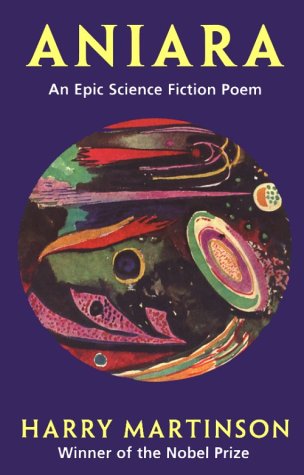
In fact, the one piece of comparable science fiction that came to mind when writing this review was Harry Martinson's Aniara. I say comparable, even though at first blush they are not particularly similar aside from being space-oriented science fiction written by European writers in the middle of the 20th century: Aniara is a series of poems about the fictional future spaceship, the Aniara, which was originally intended for Mars but instead became cast adrift into the space beyond our solar system. What holds them together for me is that they are not content to be mere diversions, entertainment; Lem and Martinson, in very different ways, use the same genre as a stepping stone towards a greater statement, maybe even art (whatever that is).
Did I enjoy either of them in the same way that I enjoy other pieces of science fiction, like Do Androids Dream of Electric Sheep? or Light? No. Definitely not. But worth reading? Yes. Will it challenge you? Without a doubt.
Saturday, November 30, 2013
101 in 1001
 I hope all of my American readers had a good Thanksgiving. Despite increasing CONSUME!CONSUME! creep, Thanksgiving remains one of my favorite holidays. Being with your family (blood-related or otherwise) and eating a whole lot of food? What's not to like about that?
I hope all of my American readers had a good Thanksgiving. Despite increasing CONSUME!CONSUME! creep, Thanksgiving remains one of my favorite holidays. Being with your family (blood-related or otherwise) and eating a whole lot of food? What's not to like about that?This year marks four (four!) different countries, and three different continents, in which I've celebrated Thanksgiving.
Completed
Just in time for Shout!Factory's MST3K Turkey Day Marathon, I finished my latest WhatCulture article about MST3K. That brings the total up to five. (10 - 15)
I finished another nonfiction book, How to Read a Book, which also completes my old, unread books goal. (2 - 10) (9 - 2)
In Progress
I added a couple more goals: Finish 7 books I've owned for over a year but haven't read yet (2 - 12). and Complete the 30 day plank challenge (6 - 15). (1 - 1)
During the Turkey Day Marathon, I got to watch an episode I hadn't finished before: Cave Dwellers. (5 - 6)
And, of course, another update and comment. (1 - 3) (7 - 4)
Failed
None this week!
Tuesday, November 26, 2013
Why I'm Not Excited About GoldieBlox
GoldieBlox made a huge splash on the Internet recently, with their commercial featuring a Rube Goldberg machine made out of fluffy princess-y toys and a parody of Beastie Boys' "Girls." For many people, this was their first introduction to the toy designed to making engineering more appealing to young girls. If you haven't seen the ad already, here it is:
 This idea that "girls like reading, boys like building" that GoldieBlox is based on doesn't sit well with me. As a rule, I dislike gender absolutism, especially absolutism taken at such face value: is this true for all girls and all boys, or only WEIRD ones? How much of parents' preconceived notions about what toys to buy their children comes into play (no pun intended)? How much of girls' disinterest in the science of building things is because many of the toys that develop the kind of spatial intelligence necessary are often marketed heavily, if not exclusively, towards boys?
This idea that "girls like reading, boys like building" that GoldieBlox is based on doesn't sit well with me. As a rule, I dislike gender absolutism, especially absolutism taken at such face value: is this true for all girls and all boys, or only WEIRD ones? How much of parents' preconceived notions about what toys to buy their children comes into play (no pun intended)? How much of girls' disinterest in the science of building things is because many of the toys that develop the kind of spatial intelligence necessary are often marketed heavily, if not exclusively, towards boys?
2. Male Normativity
Moreover, why is girls' lack of interest in science (or at least, apparent lack of interest) considered a grave problem to be solved (with crap to buy), while boys' lack of interest in reading (or at least, apparent lack of interest) is nothing worthy of its own special toy? I'm not trying to play the "what about the men" card here, or Patriarchy Hurts Men Too; more to the point that any behavior in boys (and subsequently, men) is considered the norm, the default. We don't wonder why more men aren't nurses, secretaries, or stay-at-home parents. We don't worry that our sons don't play with baby dolls. Thinking of women as a problem to be fixed (and by fixed I mean made to be more like men) is not a good implementation of feminism.
3. "Princess Creep"
So far, GoldieBlox consists of two stories. One is "The Spinning Machine," which is about how Goldie builds a machine to help her dog chase its tail. Fair enough.
The second story, for whatever reason, is back to pretty princesses, all revolving around a beauty pageant: "The Parade Float." From the website:
4. Drop in the Bucket
To be fair, this isn't a problem with GoldieBlox as a product. However, GoldieBlox is a toy, and so this point is fairly pertinent: you can't fix broken gender stereotypes just by buying new (or different) toys. You don't get to give yourself a pat on the back for buying Goldieblox for your daughter if you do nothing else to challenge her developing brain and personality, or to take a critical look at gender disparities in the media and the narratives she receives now (and she will receive later) about what it means to be a woman.
5. Fair Use?
And, for the bonus points, the fact that GoldieBlox didn't do their due diligence with spoofing The Beastie Boys in the above ad, only to turn around and sue Mike D and Ad-Rock after they expressed concern about their material being used without permission (to sell something, no less) is just the WTF cherry on this meh sundae. Hat tip to my friend Melissa for heads up on that.
This wasn't the first time I had heard of GoldieBlox, though. The GoldieBlox Kickstarter had been brought to my attention when it first came out, both by science blogs and feminist ones. Bloggers in both fields had positive things to say about the project. I liked the concept—wedding hands-on construction with a narrative is probably a great way to teach kids to use different information processing techniques in conjunction with each other, and a way to get kids who struggle with reading into books as much as it is a way to get girls into "engineering"—but the pink and purple frippery, as well as the heavy marketing towards girls, also made me uncomfortable in a way I couldn't quite articulate. After some thought and discussion with others, I managed to pare down my discomfort to some essential points.
1. Gender Absolutism
1. Gender Absolutism
 This idea that "girls like reading, boys like building" that GoldieBlox is based on doesn't sit well with me. As a rule, I dislike gender absolutism, especially absolutism taken at such face value: is this true for all girls and all boys, or only WEIRD ones? How much of parents' preconceived notions about what toys to buy their children comes into play (no pun intended)? How much of girls' disinterest in the science of building things is because many of the toys that develop the kind of spatial intelligence necessary are often marketed heavily, if not exclusively, towards boys?
This idea that "girls like reading, boys like building" that GoldieBlox is based on doesn't sit well with me. As a rule, I dislike gender absolutism, especially absolutism taken at such face value: is this true for all girls and all boys, or only WEIRD ones? How much of parents' preconceived notions about what toys to buy their children comes into play (no pun intended)? How much of girls' disinterest in the science of building things is because many of the toys that develop the kind of spatial intelligence necessary are often marketed heavily, if not exclusively, towards boys?2. Male Normativity
Moreover, why is girls' lack of interest in science (or at least, apparent lack of interest) considered a grave problem to be solved (with crap to buy), while boys' lack of interest in reading (or at least, apparent lack of interest) is nothing worthy of its own special toy? I'm not trying to play the "what about the men" card here, or Patriarchy Hurts Men Too; more to the point that any behavior in boys (and subsequently, men) is considered the norm, the default. We don't wonder why more men aren't nurses, secretaries, or stay-at-home parents. We don't worry that our sons don't play with baby dolls. Thinking of women as a problem to be fixed (and by fixed I mean made to be more like men) is not a good implementation of feminism.
3. "Princess Creep"
"But the moral of the story is that creativity and friendship are more important than any pageant!" Yes, maybe so. And maybe the story will do a really great job deconstructing the role of beauty and youth for young women and how brains are more important—I would certainly hope so. But the book and toy set is still only available for pre-order, so I'll have to reserve judgment on the story until the new set is released.In this much-anticipated sequel, Goldie's friends Ruby and Katinka compete in a princess pageant with the hopes of riding in the town parade. When Katinka loses the crown, Ruby and Goldie build something great together, teaching their friends that creativity and friendship are more important than any pageant.
4. Drop in the Bucket
To be fair, this isn't a problem with GoldieBlox as a product. However, GoldieBlox is a toy, and so this point is fairly pertinent: you can't fix broken gender stereotypes just by buying new (or different) toys. You don't get to give yourself a pat on the back for buying Goldieblox for your daughter if you do nothing else to challenge her developing brain and personality, or to take a critical look at gender disparities in the media and the narratives she receives now (and she will receive later) about what it means to be a woman.
5. Fair Use?
And, for the bonus points, the fact that GoldieBlox didn't do their due diligence with spoofing The Beastie Boys in the above ad, only to turn around and sue Mike D and Ad-Rock after they expressed concern about their material being used without permission (to sell something, no less) is just the WTF cherry on this meh sundae. Hat tip to my friend Melissa for heads up on that.
Monday, November 25, 2013
Music Monday: Lord of the Rings
 |
| Image courtesy Jonathan Rieder Lundkvist. |
In consideration of that last selection, and also in consideration of the fact that JV has gotten me hooked on War in the North, today's Music Monday is the soundtrack for the entire Lord of the Rings movie trilogy:
There you have it: nearly four hours of symphonic, cinematic mood music.
Monday, November 18, 2013
NaNoWriMo Kickoff in Stockholm and 101 in 1001
One of the WriMos in Stockholm is a photographer. (I might or might not be Facebook-stalking people as a way to procrastinate.) He took a few pictures at the kickoff (kick-off?) party at the Tolkien Society's building in Rådhuset, which you can see in this Facebook album.
I also realize that I am a day late in posting my 101 in 1001 progress. At least I have some scant progress to report!
Look at all those writers! (Image courtesy Jonathan Rieder Lundkvist)
In all my years of doing NaNo, I had never seen so many people turn out for an event! How cool to know there are so many creative, writer-ly types in my new home city. Of course there haven't been quite so many at the write-ins so far, but the showing there has still been strong and consistent.
Sunday, November 17, 2013
Suzanne Wright's Internet Autism Shitstorm
For most autistics in North America, one of the biggest thorns in their side is Autism Speaks. They are scumbags, through and through, as evidenced by this alarmist windbagging from Suzanne Wright, founder of Autism Speaks and world's biggest self-pitying soccer mom.
It's a tragedy, because they are probably the biggest autism-related charity in the US (if not the world), and as a result they have access to immense volumes of finances, "mindshare"/name recognition, etc. They could have been a tool used for incredible good: to provide support staff in schools, therapy centers, even just professional paper-pushers to help parents and autistic adults navigate a large and confusing bureaucracy.
But as Queen Whingey Soccer Mom made clear, that's not what she's about. Since in the middle of an Internet shitstorm is as good a time to post as anything, I will let those links (which are worth reading) speak for themselves, and provide the link-phobic with an alternative charity: the Autistic Self-Advocacy Network.
It's a tragedy, because they are probably the biggest autism-related charity in the US (if not the world), and as a result they have access to immense volumes of finances, "mindshare"/name recognition, etc. They could have been a tool used for incredible good: to provide support staff in schools, therapy centers, even just professional paper-pushers to help parents and autistic adults navigate a large and confusing bureaucracy.
But as Queen Whingey Soccer Mom made clear, that's not what she's about. Since in the middle of an Internet shitstorm is as good a time to post as anything, I will let those links (which are worth reading) speak for themselves, and provide the link-phobic with an alternative charity: the Autistic Self-Advocacy Network.
Wednesday, November 13, 2013
Finnish Schools and Economics
 I've seen a number of links to articles waxing poetic about Finland's amazing educational system all across my social media outlets recently. As a former teacher (and daughter of another), it's all pretty interesting and relevant to me.
I've seen a number of links to articles waxing poetic about Finland's amazing educational system all across my social media outlets recently. As a former teacher (and daughter of another), it's all pretty interesting and relevant to me.It's also ignoring the really uncomfortable fact that America is doing a crappy job in providing, financially, for its children.
First, a backtrack. I won't argue with Finland's decision to make teaching a high-paying and competitive position. Altruism and sense of duty doesn't pay student loan debts, after all. But when you start talking about differences that are more about pure pedagogical and educational theory, you tend to forget that education happens in the real world.
Diane Ravitch, in her interview on The Daily Show, declared that the United States leads the OECD (or world?) in child poverty. That may have been an overstatement, but not by much. Check out all these graphs.
Granted, the link between poverty and poor academic performance might be more pronounced in the United States than in other countries, due to how American public schools receive their funding. Nonetheless, to tease out the effects of Finland's chosen system (and not any happy side effects of greater income parity, lower levels of child poverty, or differences in school funding), a comparison that controls for economic differences is necessary. Of course, Finland does pretty well on the world stage, but so does Japan, and their systems are very different.
The world is complicated, and solving a problem often requires multiple fixes.
Wednesday, November 6, 2013
Abandoned Particle Physics Lab
I should be working on my NaNo project, but instead I'm updating. Oops.
It's funny, really, how productive I become in the face of NaNoWriMo. Suddenly doing the dishes, catching up on emails, or hanging up the laundry are really important and interesting tasks that I have to do right now, you see. I'm actually typing this entry with hands still wrinkled from the dishes. I don't even really have much to share—I am practically superstitious about talking about my ~creative~ ideas—but I wanted to share this story I saw over on Physics Buzz:
Pittsburgh's Abandoned Particle Smasher
I guess my excuse is that it could be a good setting for a story?
I read, years ago, The World Without Us, which made me realize just how precarious human civilization's grip is on this planet. Not only because we are still vulnerable to natural disasters despite our best preparations, or because we're destroying our atmosphere and using up all of our natural resources, but because almost everything we've built in recent history contains so much upkeep. If we were all to disappear (for whatever reason) the remnants left behind would not be long for this world.
Unfortunately I didn't learn about this abandoned particle accelerator until after I moved away, so I didn't have a chance to visit it in its neglected, dilapidated glory. How cool to know that it exists, though!
It's funny, really, how productive I become in the face of NaNoWriMo. Suddenly doing the dishes, catching up on emails, or hanging up the laundry are really important and interesting tasks that I have to do right now, you see. I'm actually typing this entry with hands still wrinkled from the dishes. I don't even really have much to share—I am practically superstitious about talking about my ~creative~ ideas—but I wanted to share this story I saw over on Physics Buzz:
Pittsburgh's Abandoned Particle Smasher
I guess my excuse is that it could be a good setting for a story?
I read, years ago, The World Without Us, which made me realize just how precarious human civilization's grip is on this planet. Not only because we are still vulnerable to natural disasters despite our best preparations, or because we're destroying our atmosphere and using up all of our natural resources, but because almost everything we've built in recent history contains so much upkeep. If we were all to disappear (for whatever reason) the remnants left behind would not be long for this world.
Unfortunately I didn't learn about this abandoned particle accelerator until after I moved away, so I didn't have a chance to visit it in its neglected, dilapidated glory. How cool to know that it exists, though!
Saturday, November 2, 2013
30 Days of Madness
 With the arrival of November comes National Novel Writing Month, also known as NaNoWriMo. I've attempted (though not always succeeded) every year since 2008. At this point, it's basically the only fiction writing I do anymore.
With the arrival of November comes National Novel Writing Month, also known as NaNoWriMo. I've attempted (though not always succeeded) every year since 2008. At this point, it's basically the only fiction writing I do anymore.If you're also doing NaNo, you can find me at the website (handle: Kokoba) to keep track of my word count, read more about my novel, and maybe even read some excerpts (if I put any up). If you haven't done it before, give it a shot! It's fun and you can meet some fantastic people. It's especially useful for anyone who dreams of being a writer, because no matter how sensitive and gifted you are (or think you are), what writing really comes down to is sitting down to do it every day, no matter what. Doing it for a month is a good practice.
Participating in NaNo is one of my 101 in 1001 events; there's one more over the course of my list and that will be another item I've accomplished. For more updates on that list, click past the jump.
Wednesday, October 30, 2013
Setting up the Geek House
After many trials and tribulations I have finally (and permanently) relocated to Stockholm, Sweden. At the moment I am at a loss for words. It is surreal, after years of brief visits or semesters abroad, to finally be here for more than a transitory visit; if there is a positive version of trauma or PTSD, then I'm feeling it right now.
Unfortunately, it looks as though I'll have to move house before the end of the year. Instead of being frustrated and stressed about that, however, I'm going to look on it as a chance for a (maybe) better apartment and to escape the terrible upstairs neighbor, Takjävel, and most importantly as a chance to decorate!
JV and I are both mad for pillows. We can't ever get enough. The pillows we have now, though, lack any sense of humor or personality. These pillows from pillows4fun on Zibbet would be a great alternative:
Unfortunately, it looks as though I'll have to move house before the end of the year. Instead of being frustrated and stressed about that, however, I'm going to look on it as a chance for a (maybe) better apartment and to escape the terrible upstairs neighbor, Takjävel, and most importantly as a chance to decorate!
JV and I are both mad for pillows. We can't ever get enough. The pillows we have now, though, lack any sense of humor or personality. These pillows from pillows4fun on Zibbet would be a great alternative:
We don't have much in the way of art at the moment. This print from minouette, a fellow Mad Scientist of Etsy, would be great to frame and hang in the living room:
The mark of being a proper adult is maybe the switch from paper to cloth napkins. Maybe. In any case, I like these circuit board print napkins from juniperberries enough to buy a few for our new kitchen, whenever we may get it:
That just leaves the bathroom. JV is inordinately sensitive to most scents and perfumes, so my days of artisan soaps and bodywashes are over. At least I can still lust after nice hand towels for the bathroom, like these his and hers Totoro towels from QuantumStitching:
If you've found any other great pieces of geeky home decor, share in the comments!
Sunday, October 13, 2013
101 in 1001
And the productivity continues!
Completed:
I finished both of Bryan's scripts and all of his synopses! (7 - 3)
In Progress:
I added another goal: Finish 5 books I've owned for over year but haven't read yet. (2 - 11) (1 - 1)
Another update and comment. (1 - 3) ( 7 - 4).
After this update, I will be driving up north to visit some friends and go to Secret Caverns! I am SO FREAKING EXCITED, just look at their billboards!
Failed:
At this point it looks like I won't be able to make it to Penn's Cave before I leave the country, but I won't cross out it just yet.
Rest of the list after the jump.
Completed:
I finished both of Bryan's scripts and all of his synopses! (7 - 3)
In Progress:
I added another goal: Finish 5 books I've owned for over year but haven't read yet. (2 - 11) (1 - 1)
Another update and comment. (1 - 3) ( 7 - 4).
After this update, I will be driving up north to visit some friends and go to Secret Caverns! I am SO FREAKING EXCITED, just look at their billboards!
And their lobby entrance!
Failed:
At this point it looks like I won't be able to make it to Penn's Cave before I leave the country, but I won't cross out it just yet.
Rest of the list after the jump.
Friday, October 11, 2013
Friday Finds: Science Jewelry
I'm always on the prowl for neat science-inspired jewelry (besides my own, of course). Here are some of the best I've found recently!
I was totally stunned both with how creative the idea behind this bracelet is and gorgeous it ended up being.
"Hydrogen? How is this hydrogen? I'm skeptical," you're probably thinking. I was too. Then I read the description:
If you want something a little more flashy, how about this Mars rover statement necklace?
I was totally stunned both with how creative the idea behind this bracelet is and gorgeous it ended up being.
Hydrogen Necklace by MChandraJewelry on Etsy
Hydrogen gas, when excited, emits characteristic colors. The colors of the hydrogen spectrum inspire this necklace - violet amethyst, turquoise and red coral. Hydrogen has a "line spectrum:" the bands of color are very narrow, hence the use of rondelle beads. There are dark regions in between, indicated by hematite beads.What an awesome and artistic depiction of an important chemical property!
If you want something a little more flashy, how about this Mars rover statement necklace?
Mount Sharp Necklace from MarsBling on Etsy
The image in the middle is a photo of Mount Sharp taken by the Curiosity rover. The copper chain and accent pieces are a perfect fit for the Red Planet.
If paleontology or biology is more your thing, here's a great, understated pendant for you from Zibbet:
Red Fossil Coral Necklace by CindyLouWho2 on Zibbet
In the end, though, I have to come back to astronomy. This solar system bracelet is just too cute.
Solar System Bracelet by TheDopelerEffect on Zibbet
I love how there's even the moon there, dangling off of the Earth!
Wednesday, October 9, 2013
Birthstones: Garnet (January)
January and garnet is one of the more consistent associations among birthstones. It appears in all three contemporary sources for birthstones: the Tiffany & Co. list, the Kansas City list, and the British Goldsmiths' list.By her who in [January] is born
No gem save garnets should be worn;
They will ensure her constancy,
True friendship, and fidelity.
In particular, January is associated with red garnets. Garnet comes in a variety of colors, but it seems that despite the vague entreaty in the Tiffany & Co. poem above, January's stone has been a red garnet.
Garnet is another variety of silicate, meaning that at its core it contains silicon and oxygen (mostly oxygen). Specifically, it is a nesosilicate, which means that on a molecular level, garnet is a bunch of tetrahedrons (like a 4-sided die) connected to each other via single ions.
However, garnet isn't a pure silicate. While it's mostly silicon and oxygen, it also contains (necessarily) other elements: magnesium and aluminum; iron and aluminum; manganese and aluminum; calcium and iron; calcium and aluminum; calcium and chromium. The chemical formula then looks something like this:
X3Y2(SiO4)3
where X is occupied by +2 cations and Y by +3 cations; one SiO4 molecule has a charge of –4, thus everything balances out.
The word garnet comes from Latin garanatus, or "seedlike." This was in reference to the similarity in color between red garnet and the seed-filled pomegranate fruit. In addition to its use in jewelry, garnet is often used as an abrasive in sand blasting; mixed with water to cut steel; and as water filtration sand. Garnet is also important in the science of geothermobarometry: describing the heat and pressure history of a rock (metamorphic or intrusive igneous). Garnets in a rock act something like a diary, maintaining the temperature and pressure the rock experienced in past ages.
Needless to say, it also is a stunning, vibrant red that makes for beautiful jewelry.
Needless to say, it also is a stunning, vibrant red that makes for beautiful jewelry.
'Gorgeous Garnet' by Kokoba
A celebration of January's birthstone, red garnet!
Sponsored by send bulk email from excel.
Monday, October 7, 2013
101 in 1001
And the productivity continues!
Completed:
I stayed up late and finished Bridget Jones' Diary in one sitting (don't judge me). I then realized I've had the book since 2010, so there's my third book off the list! (2 - 3) And I actually read a fourth, too!
In Progress:
Another update and comment. (1 - 3) ( 7 - 4).
I finished a nonfiction book I started reading quite a while ago, A History of the Mind. Why yes, "quite a while" means "at the beginning of this year." What can I say? Other things came up. However, it was a good read and one that I will be keeping in my small collection of "ruminations on 'the self'" literature. However, since it counts as an "owned over a year" book, I'm also counting it towards the above finished goal, since I'll probably make new goal for more unread books. (9 - 2)
I also saw Salinger at the local indie theater last week, so that's another documentary as well. (9 - 6)
Failed:
None!
Rest of the list after the jump.
Completed:
I stayed up late and finished Bridget Jones' Diary in one sitting (don't judge me). I then realized I've had the book since 2010, so there's my third book off the list! (2 - 3) And I actually read a fourth, too!
In Progress:
Another update and comment. (1 - 3) ( 7 - 4).
I finished a nonfiction book I started reading quite a while ago, A History of the Mind. Why yes, "quite a while" means "at the beginning of this year." What can I say? Other things came up. However, it was a good read and one that I will be keeping in my small collection of "ruminations on 'the self'" literature. However, since it counts as an "owned over a year" book, I'm also counting it towards the above finished goal, since I'll probably make new goal for more unread books. (9 - 2)
I also saw Salinger at the local indie theater last week, so that's another documentary as well. (9 - 6)
Failed:
None!
Rest of the list after the jump.
Friday, October 4, 2013
Friday Finds: Mortal Kombat and Biology
Two finds today, one courtesy of Zibbet and one courtesy of Etsy.
First, from Magpie House on Zibbet, these awesome Mortal Kombat earrings.
First, from Magpie House on Zibbet, these awesome Mortal Kombat earrings.
If you're more an FPS player than a fighter, how about this Tribalman's Shiv? It's perfect for all you TF2 snipers out there:
Finally, some gorgeous biology art from sandraculliton on Etsy:
The Genetic Code by sandraculliton
Subscribe to:
Posts (Atom)











